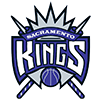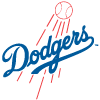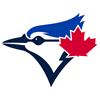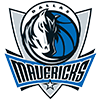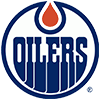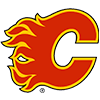For those unaware, KDS gives the drafter some control over their draft spot. Everyone prioritizes where they want to pick in the first round. The teams are then drawn randomly, with the first team selected award their highest priority. The second team gets their highest remaining choice, and so on. Little known fact: while the NFBC is credited with the advent of KDS, your humble pundit used it for a league called Mixed Nuts before the NFBC originated. Back around 2001, I recognized the direction of the industry was shifting away from single-league auction and towards mixed league drafts. To be honest, many of my brethren didn't compete in that format, so to edify ourselves, I gathered 16 colleagues and Mixed Nuts was born.
There are several philosophies regarding setting KDS slot priorities. While the theme will always keep that in mind, hopefully you'll see through my facade and realize this is just a thinly veiled means of talking about general draft concepts.
Early Picks Give the Greatest Advantage
In a previous Z Files, I presented an old ploy I call Graph-a-Draft. The idea is to take
For those unaware, KDS gives the drafter some control over their draft spot. Everyone prioritizes where they want to pick in the first round. The teams are then drawn randomly, with the first team selected award their highest priority. The second team gets their highest remaining choice, and so on. Little known fact: while the NFBC is credited with the advent of KDS, your humble pundit used it for a league called Mixed Nuts before the NFBC originated. Back around 2001, I recognized the direction of the industry was shifting away from single-league auction and towards mixed league drafts. To be honest, many of my brethren didn't compete in that format, so to edify ourselves, I gathered 16 colleagues and Mixed Nuts was born.
There are several philosophies regarding setting KDS slot priorities. While the theme will always keep that in mind, hopefully you'll see through my facade and realize this is just a thinly veiled means of talking about general draft concepts.
Early Picks Give the Greatest Advantage
In a previous Z Files, I presented an old ploy I call Graph-a-Draft. The idea is to take typical auction values and assign them to their corresponding draft spots. I use an average of season-ending values for the same size league from the last three years. The top value is given to the first pick, etc. The following is a table showing the summed amounts allotted to the picks of a 15-team draft if players were selected in order of value:
| PICK | TOTAL |
| 1 | $270 |
| 2 | $267 |
| 3 | $264 |
| 4 | $262 |
| 5 | $262 |
| 6 | $260 |
| 7 | $259 |
| 8 | $259 |
| 9 | $258 |
| 10 | $257 |
| 11 | $257 |
| 12 | $256 |
| 13 | $256 |
| 14 | $256 |
| 15 | $257 |
The numbers will be a little different for each three-year span, but the outcome will be the same. The first pick will always pull the greatest value. Not only that, the difference between the first and second pick is usually the biggest among all adjacent spots. Using this example, this is the equivalent of giving someone a $270 budget in an auction, followed by $267 etc. Who wouldn't want to enter an auction with the most money?
That's the underlying principle for setting KDS 1-15, or at least 1-5 or so. The earlier you pick, the greater your theoretical advantage, at least on paper. So why doesn't everyone set their KDS in this manner?
Each year, the NFBC tabulates how many league winners emanated from each draft spot. While it isn't distributed equally among the 15 positions, year after year winners come from all 15 spots. In fact, last year's NFBC Grand Champion, Rob Silver, had to wait until 14 other competitors made a pick before he chose his first player. As such, there are alternate KDS setting employed by the participants.
Fun at the Wheel
As you're likely aware, most drafts follow the snake format with the order of even numbered rounds switching to 15-1. This yields consecutive picks for players at either end of the snake. Such picks are referred to as wheel picks and are a favorite of some, including yours truly. I can't speak for everyone, but I can explain why I favor sitting at the wheel. First, let's dispel the notion of 'best available player'.
Here's a dirty little secret: best available player is a myth; it doesn't exist. Many contend their strategy, at least early, is taking the best available player. Even in a draft, this is often derived from an auction value. The problem is projections are not accurate while even the soundest valuation methodology is fraught with errors. Yes, those of us in the business come up with a static projection which is converted into a static value, but there's too much noise to unequivocally decree a $36.44 player is superior to a $35.87 player. Sorry friends, it simply isn't the case.
However, if you think of things in terms of team construct, there's usually a player best for your team. This may encompass their position, statistical contribution or even risk profile. My preferred plan is to visualize what I want my team to look like at the end of the draft before it begins. I find it easier to get there if I'm on the wheel and can pair up a couple of player. I don't have to hope I get what I need to make the preceding pick most efficient, which often transpires from a middle pick.
The other reason I favor a spot at the turn is it allows me to anticipate what the room will do, and get out in front of runs. Some prefer to draft in the middle, feeling there's less of a chance of getting burned by a run of players from the same position, often closers. My approach is to be prescient, grabbing the player I want most from the impending run. I've often been accused of having a knack for starting runs. Here's another secret: it was going to start regardless. I just had the foresight to jump it. Choose, don't chase.
Targeting Specific Players
A couple weeks back, I wrote about the shortcomings of ADP, average draft position. Given that, some like to design their KDS with a pick other than their first rounder in mind. The chief targets are starting pitchers and perceived scarce positions.
Let's address pitching first. I don't have a problem with setting KDS to snag a specific hurler or one from a group of hurlers. Hopefully, those employing this tactic are willing to incur the risk the draft unfolds in a manner that interferes with their plan. This isn't a mechanism I prefer, but I'm not faulting those that use it. Building a comfortable pitching staff is paramount, so more power to any path helping you accomplish it.
I do, however, have an issue with setting a KDS to deal with scarcity, because like best available player, it doesn't exist. There isn't a textbook definition of scarcity. What I'm referring to is the notion that there's strong and weak positional pools. Save for catcher, the current inventory, even in shallow mixed formats, doesn't contain a position so weak it's necessary to devise a plan to nab a player at said position early. Practically speaking, this means the second baseman coming off the board in the latter rounds is similar to the first baseman, third baseman, shortstop or outfielder. From a more technical perspective, assuming you adjust catchers properly, if you list exactly the number of players to legally fill each active roster, there will be ample players at each position to do this, without having to reach past this list. Even if your list is a couple players short at a position, the chances are near 100 percent someone on your own list will be available, since we all view the player pool differently at the low end.
While targeting, say, one from a group of early shortstops because it's a perceived scarce position isn't an efficient use of ADP, wanting to draft one for other reasons is perfectly viable. Perhaps there's a big drop-off at the position and while there will be an end-game option available, you sense there will be players you desire more with a late pick at other positions. Here, it makes sense to get the shortstop out of the way early.
Putting It Together
As you likely intuit, setting your KDS slots involves meshing a few different preferences. Most determine how many players they're happy with early before other factors take over. If there's a player perceived to be the clear top pick, it obviously begins with 1. If the next five players are so close you don't care which you get, the KDS can be 1-6 or 1, 6-2. Those liking a wheel pick opt for the former. Those desiring an earlier pick in the second round choose the latter.
For those preferring the wheel, like myself, it's a matter of deciding how many first picks supersede the wish for the wheel. I'm looking at Clayton Kershaw, Mike Trout and Nolan Arenado as the only three players I fancy more than the wheel. As such, my KDS is likely to start with 1, 2, 3, 15, 14, 13. I'm still contemplating whether to jump back to the front or keep going backwards.
While this is still a work in progress, if forced to set a KDS today, it would be 1, 2, 3, 15, 14, 13, 4, 5, 6, 7, 12, 11, 10, 9, 8. Once I hit pick 12, I'm too far from the turn to really take advantage of the proximity of the picks, so give me a chance at one of the above players if they fall to the fourth pick, else I'll gladly build around Mookie Betts, Jose Altuve, Kris Bryant or Paul Goldschmidt. The eight-hole is my least favorite spot. It's more difficult to pair up players, plus I run the risk of having to react to a run and taking what's left.
Short of bidding FAAB dollars on draft spots, KDS is the fairest way to garner some control over your draft position. If your home league uses a random draw, think about incorporating KDS instead.









